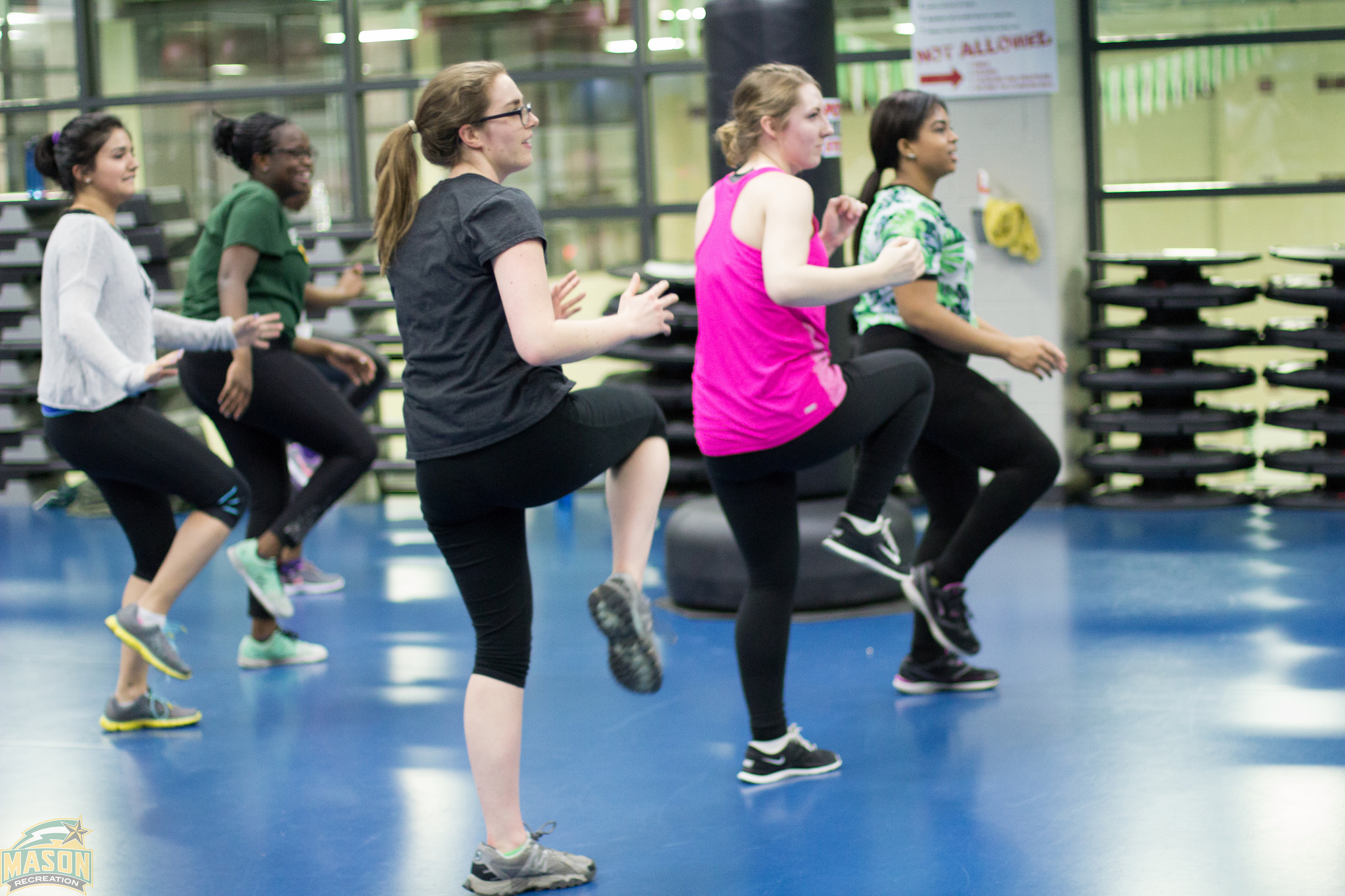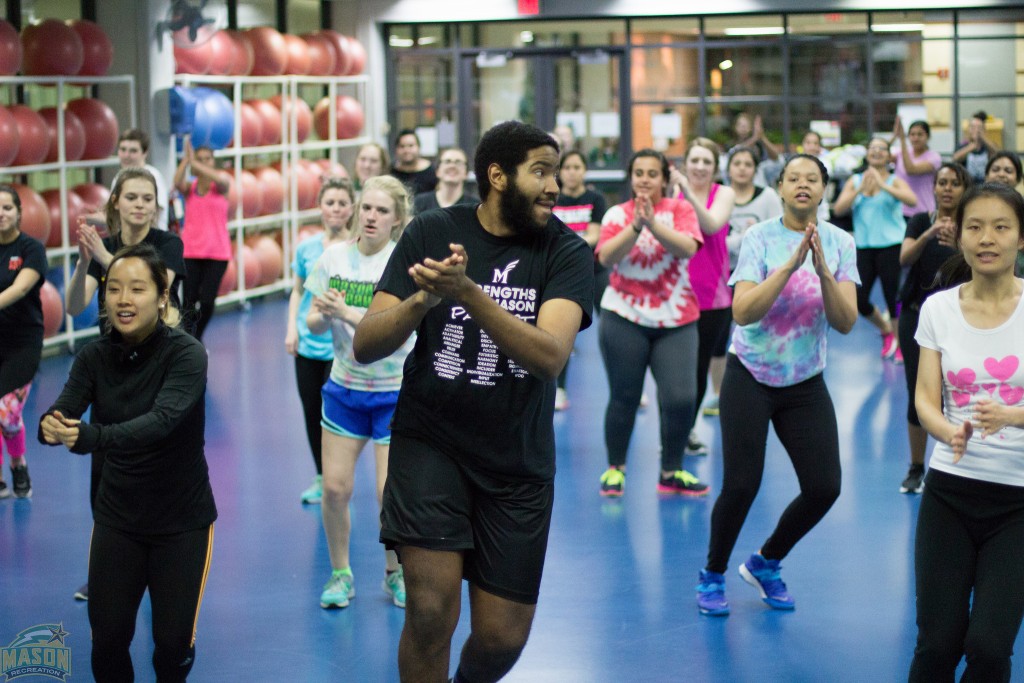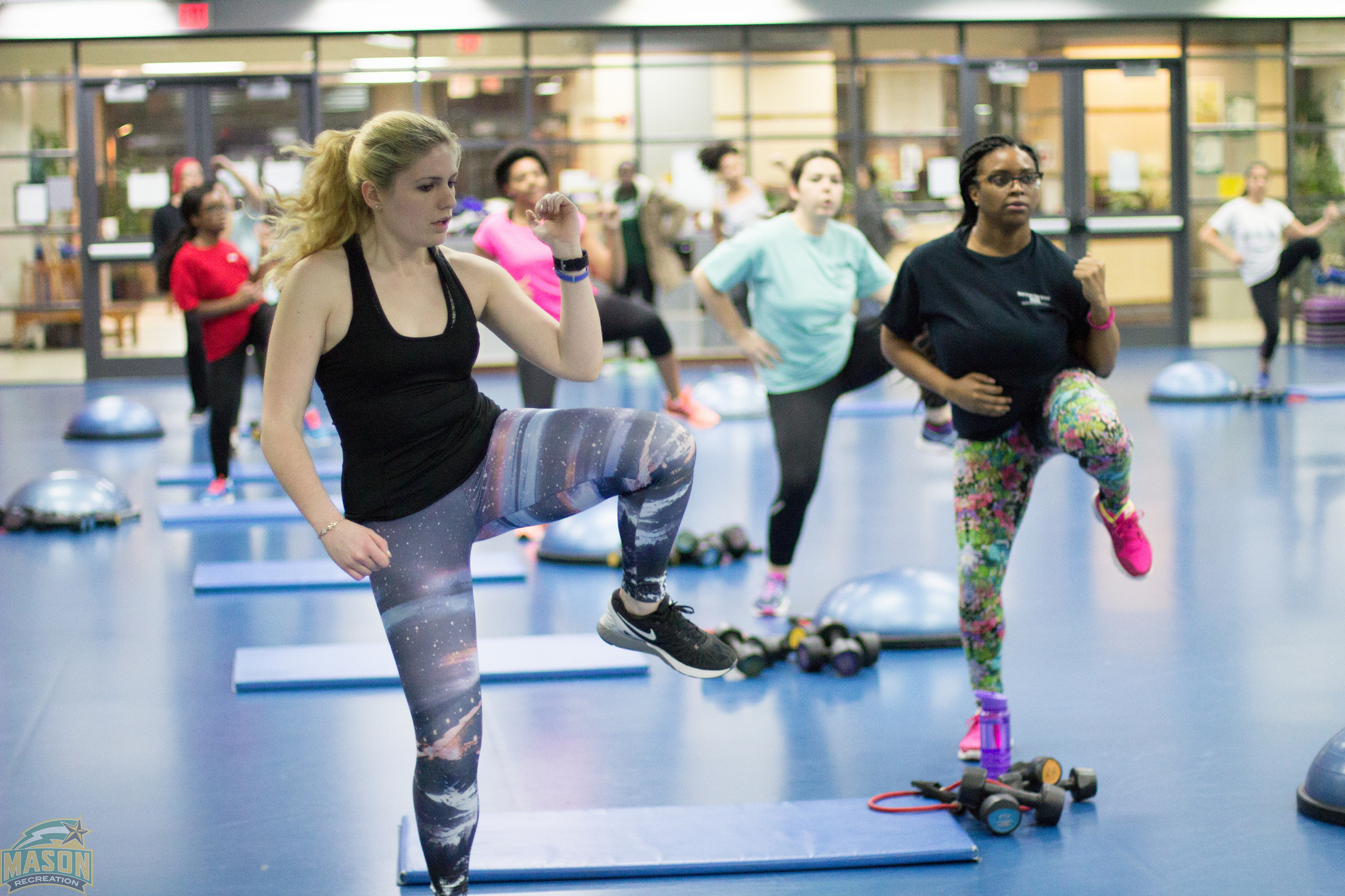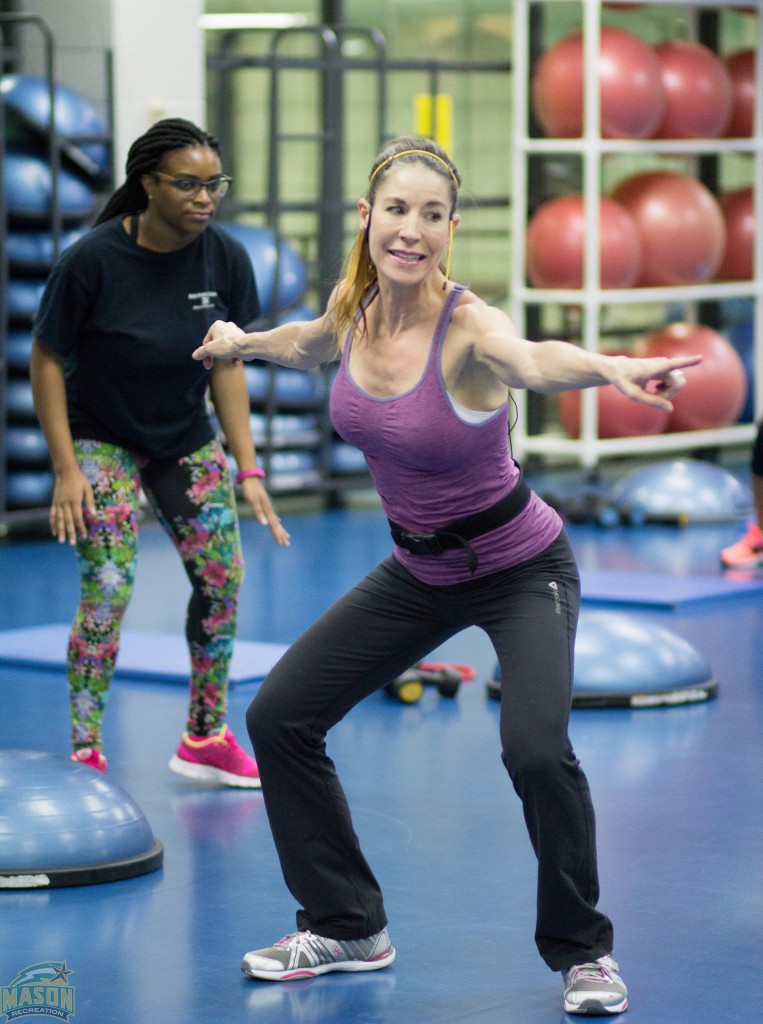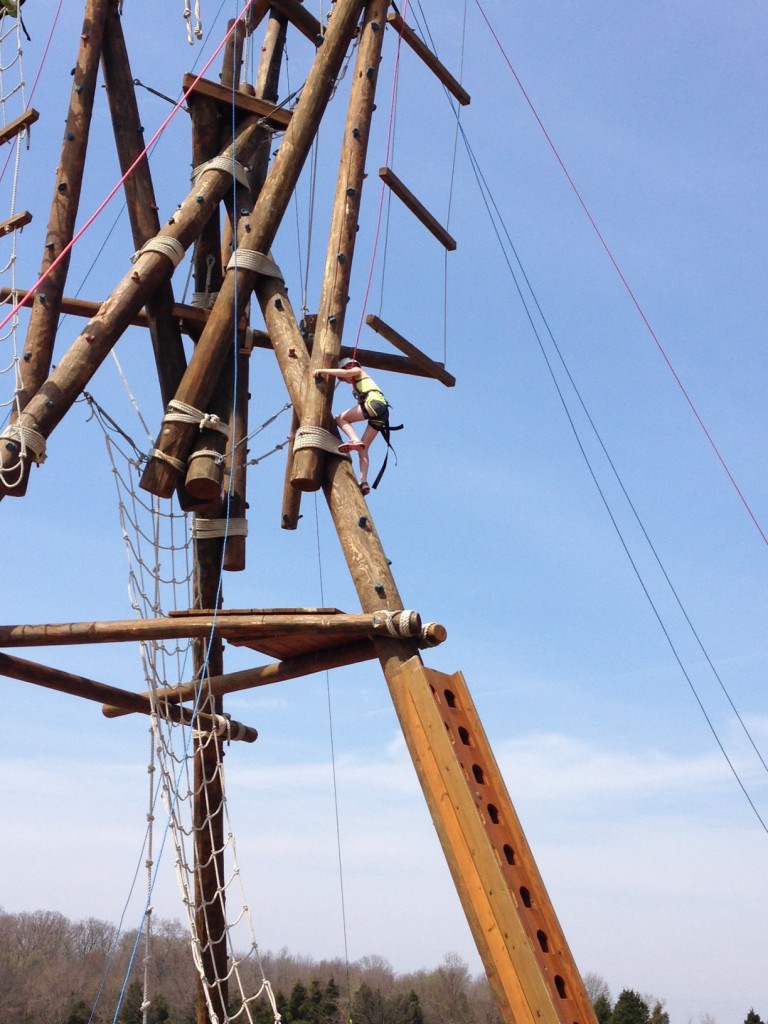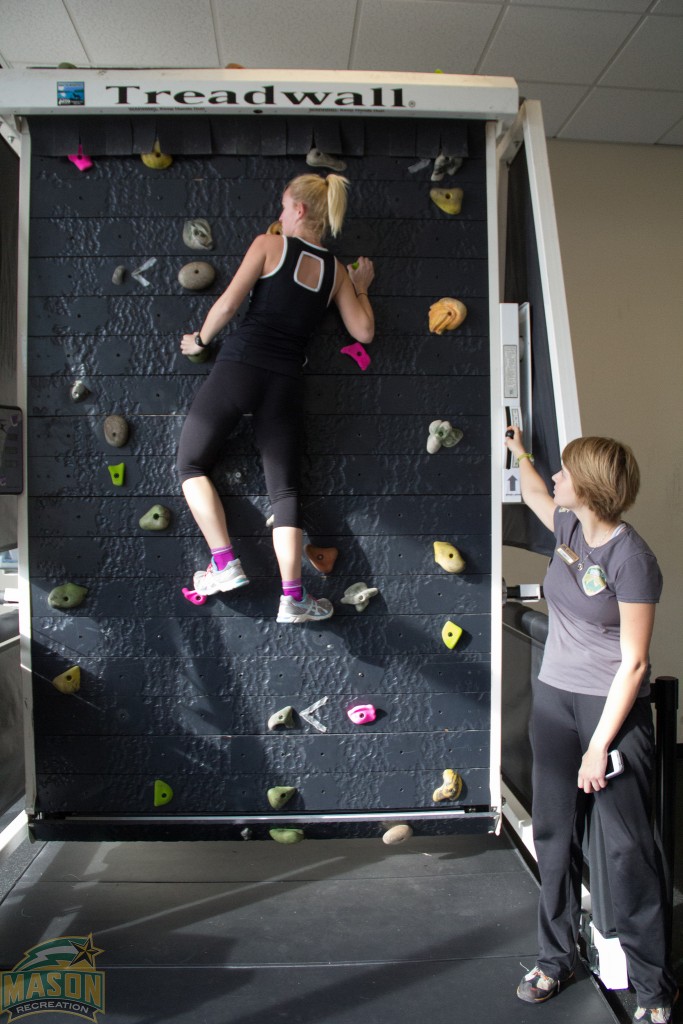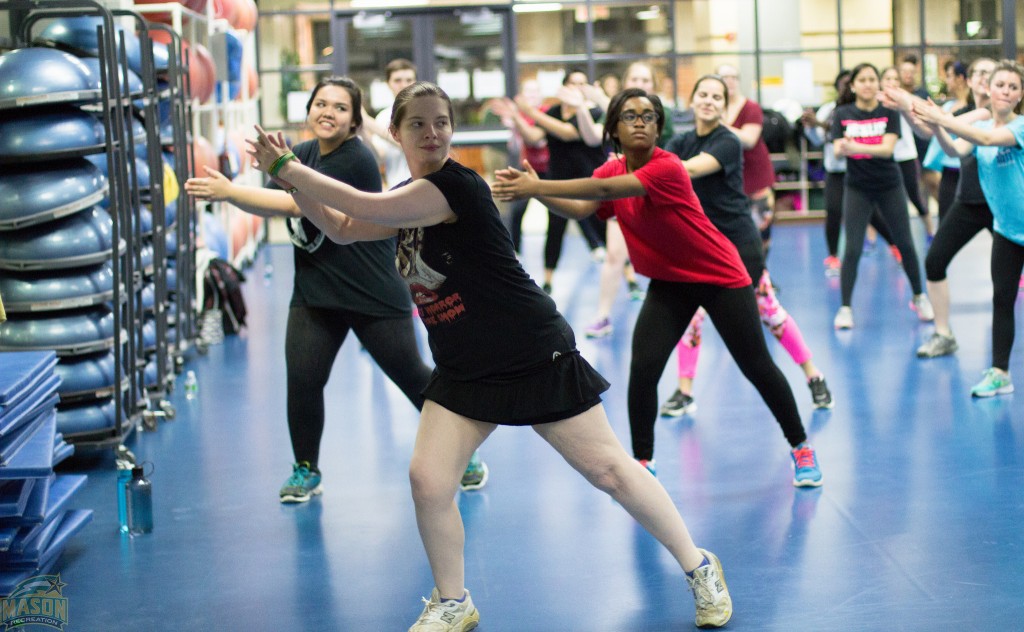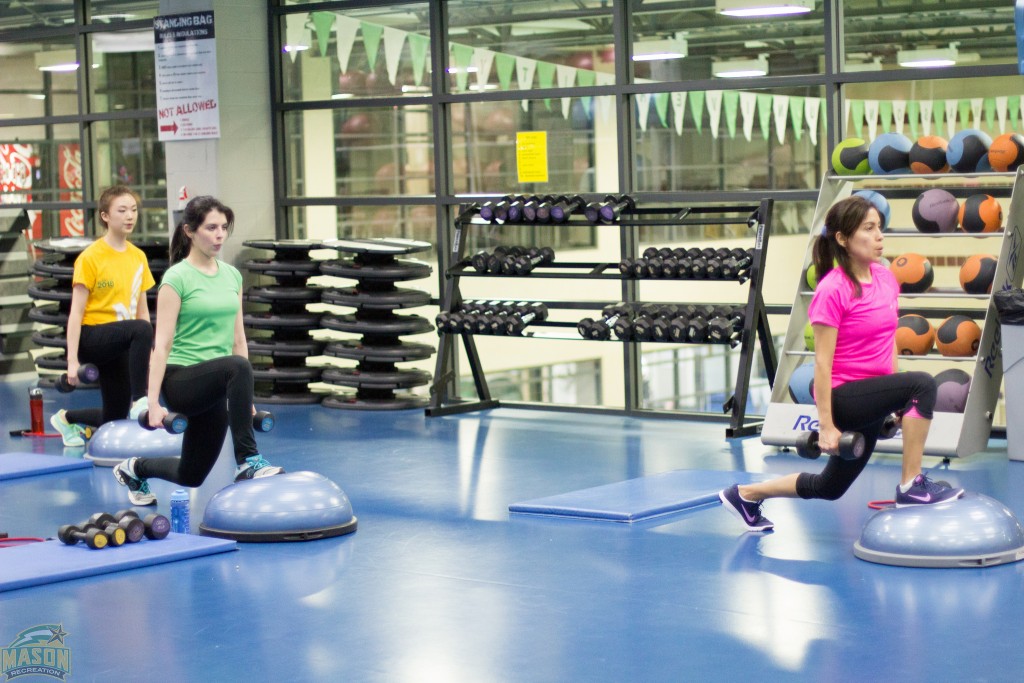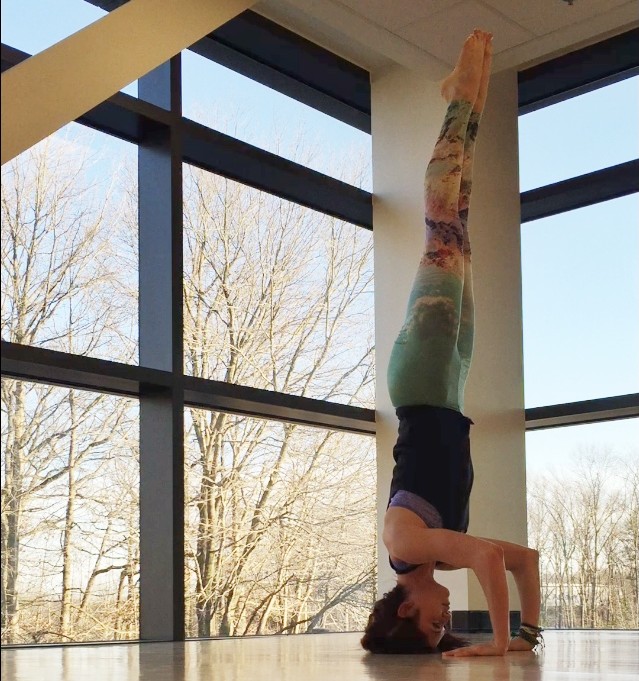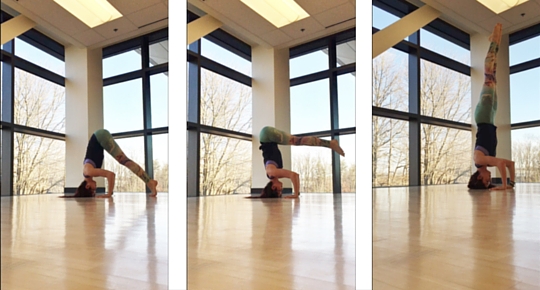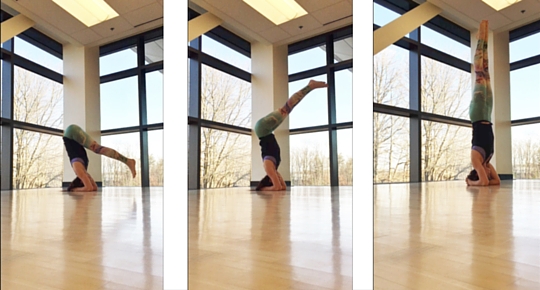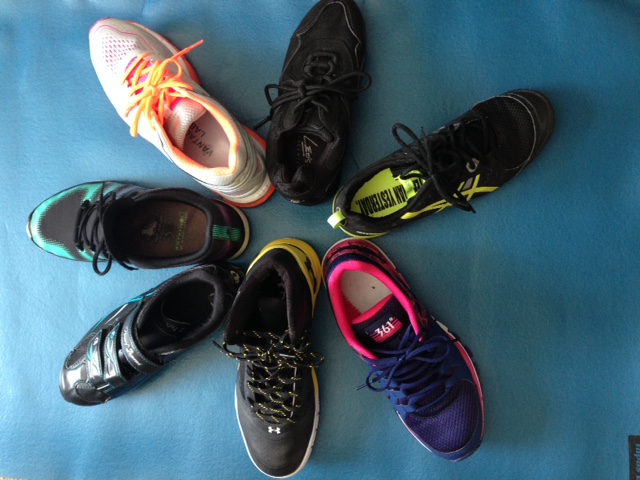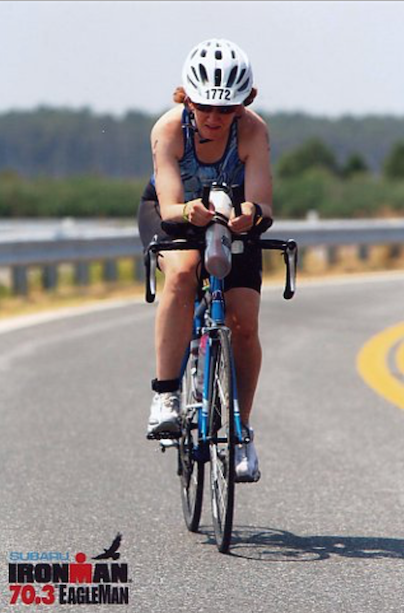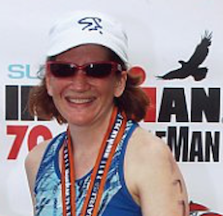Have you heard of the Zumba® program “Ditch the Workout, Join the Party”? Either at home or in group fitness class, Zumba®’s popularity continues to skyrocket. Mason Rec’s Zumba® classes continue to draw big numbers semester after semester. Have you tried it? If so, great! Keep coming! If not, why? Do you feel you have two left feet? Are rhythmically challenged? Will look silly? So what! Come anyways. I did, and I’ll admit, it was fun.
A little background on me: I can keep a beat. I’ve taught group fitness for more than 13 years and can do fancy step choreography. But I feel like I look very, very silly trying to do Zumba®. I may or may not look as silly as I think (I really don’t want to know), but I decided I needed get out of my comfort zone and give Zumba® a try. For me, the key is finding a spot where I can’t see myself in the mirror. You might do better at a spot where you can see yourself—just find what works for you. Wear comfortable workout clothes. You should be able to move freely. Ideally, you should wear workout shoes with lateral support—think cross trainers more than running shoes. If you have access to dance sneakers, they’re your best bet.
The great thing about Zumba® is you can be you. The instructor demonstrates the moves, but you make them your own. If you don’t want to pivot, you don’t. If you don’t want to shake your hips, you don’t. If you want to let loose, you can. If you want to jump around like crazy, you can. As long as you’re keeping it safe, it’s your choice how you interpret each move, and suddenly the hour does feel more like a party than a workout.

